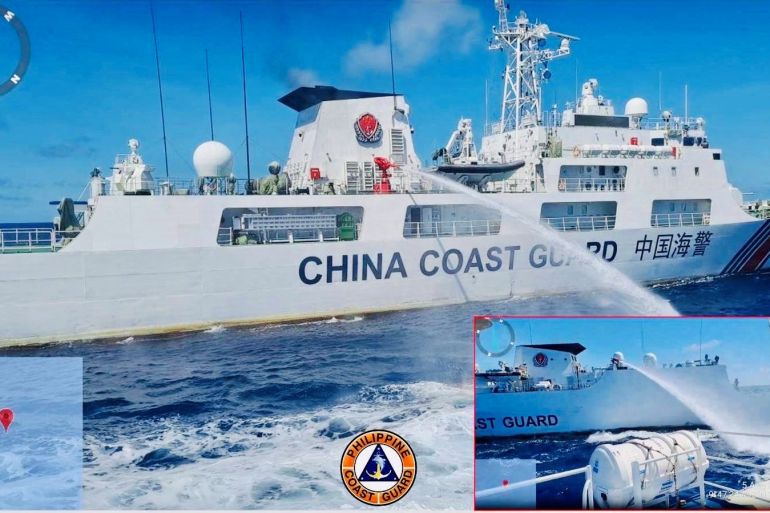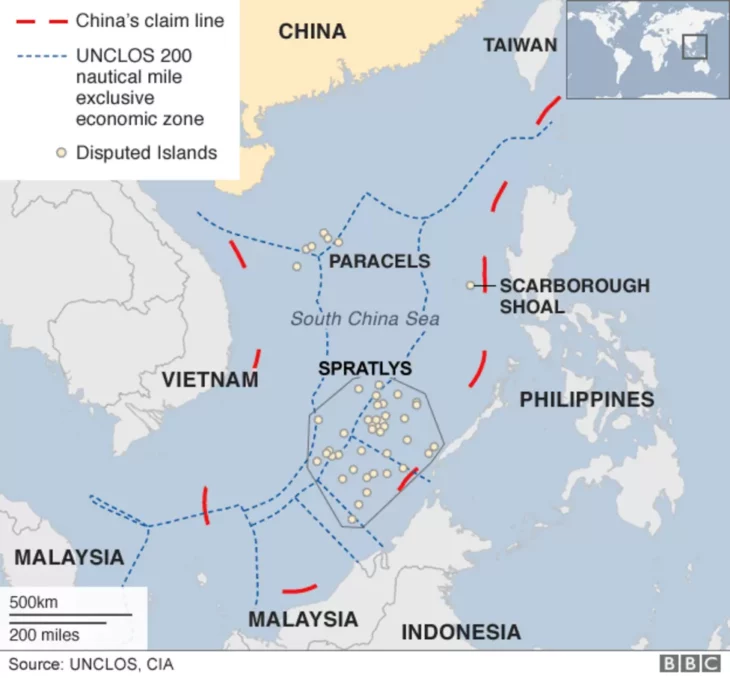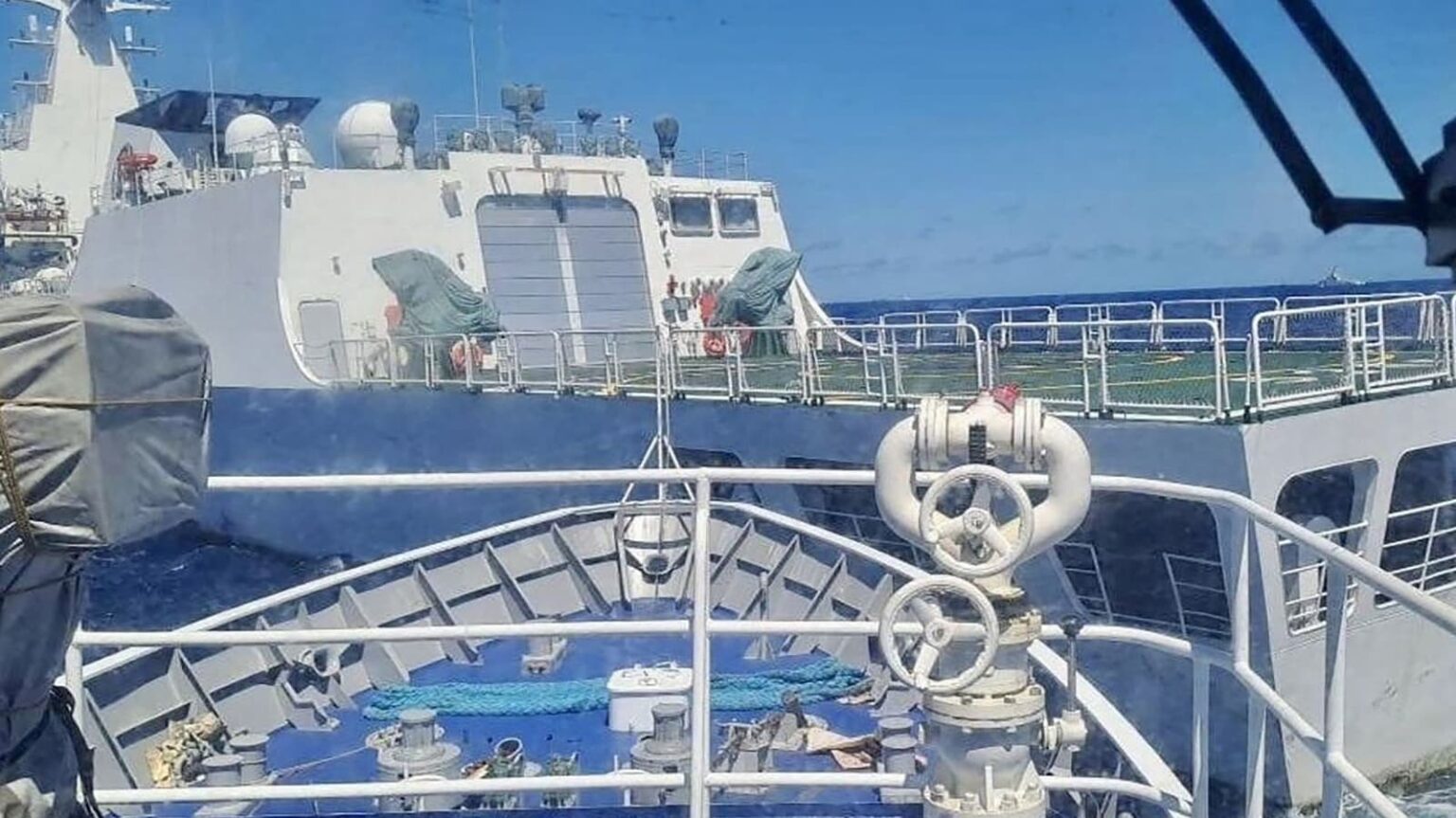On Saturday August 5, Chinese Coast Guard ships were accused of firing water cannons and blocking Philippines’ Coast Guard in another attempted manoeuvre of territorial dispute in the often point of distress – South China Sea.
The statement was shared on Philippine Coast Guard’s official Facebook account supported with a picture of China Coast Guard (CCG) blocking PCG’s (Philippines Coast Guard’s) path during a re-supply trip. The post expressed strong condemnation towards the Philippine counterpart and called the act illegal as well as dangerous towards the PCG vessels.

The PCG vessels were reported to be escorting ships carrying supplies meant for military troops in Ayungin Shoal, a place also known as the Second Thomas Shoal. It’s located in the Spratly Islands chain which is known by the name of Nansha Islands in China. China calls the shoal Renai Reef.
The issue emerges from the deep rooted dispute over the South China Sea, a marine area just below China, and surrounded by countries like Taiwan, Vietnam, Philippines etc who are in a seemingly unending marathon with China over its territorial rights.
One third of the total world trade passes through this small stretch of area, one that in no volume lacks courtesy of resources, be it in terms of marine life or seeped under the beds of the ocean in form of oil and minerals, unquestionably posing it as a mass of interest for a number of sovereign states in the world, not just those surrounding the South China Sea like our two subjects right now but those whose borders do not touch the water that flows here.
Now, as a response to the Philippines’ accusation, China gave a statement making it clear that the PCG was trespassing in its waters and thus the water cannon firing was subtly valid.
Gan Yu, spokesman for the China Coast Guard gave a statement synonymous with the one published on its official website, implying that two Filipino supply vessels accompanied by two coast guard vessels were illegally found, intruding into the waters adjacent to Renai Reef in China’s Nansha Islands.
The official called China Coast Guard’s actions necessary as a response to the illegal intrusion, Gan Yu also added that it was lawful to prevent the Philippine vessel from entering into Chinese waters with an illegal supply of construction materials. He clearly expressed CCG’s perception of the uncalled event and treated it as barging in.
The issued statement asks the Philippine marine and trade to “immediately stop its infringing activities” in the maritime area of concern. Gan Yu’s words gave yet another reassertment of the Chinese claiming territorial rights on the islands and waters in South China Sea ignoring arguments from neighbouring countries by agreeing to continue law-enforcement activity within the region.
However, the Philippine ally US has expressed its solid support for the Philippines and asked China to respectively let the freedom of navigation alive, denying China’s lawful claims over the territory.

South China Sea is one of the most contested areas in the globe, with 1.3 million square miles of maritime waters in the South China Sea it includes the Spratlys, which is an archipelago consisting of 100 small islands and reefs. Along with Beijing claiming “indisputable sovereignty” over it, Philippines’ Manila, Malaysia, Brunei and Taiwan also have partial claims over the sea along with the islands sustaining in it.
Manila calls the area the West Philippine Sea showcasing its own claims over the much disputed part of the geography. In 1999, it positioned a navy transport ship called the BRP Sierra Madre, on Second Thomas Shoal in order to further enforce the country’s claim to the area.












